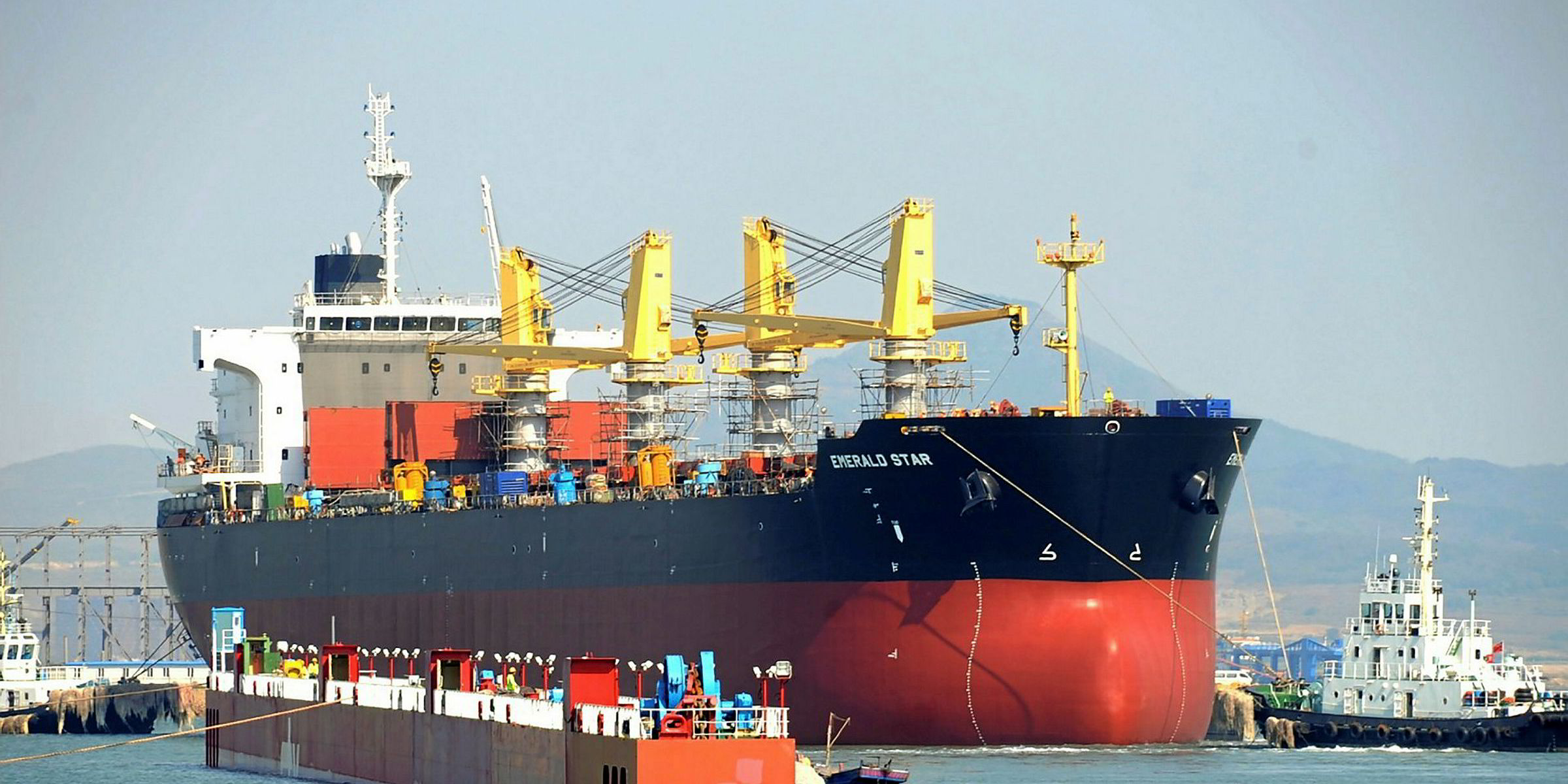A bulker that sank off the Philippines in a suspected case of nickel ore liquefaction last week had loaded a cargo sourced from an opencast mine on the Indonesian island of Halmahera.
The extraction process at the mine is known to leave nickel ore exposed to the elements and liable to take on water.
Its ore is of varying consistency including rocks that do not take on water and also fine particles that are prone to liquefaction.
Sources say cargoes from the mine are often loaded directly onto ships at the Tanjung Buli terminal without processing and they have previously been known to have a moisture content as high as 35%.
Indonesia is in its rainy season which runs from October to April.
The ship’s operator, Dubai’s Stellar Ocean Transport, confirms the 57,300-dwt Emerald Star (built 2010) was carrying nickel ore loaded at Tanjung to China when it sank.
“Owners are in the midst of investigating the circumstances of the loss with the flag state,” the company said, adding that its prayers are with the families of the missing.
The North of England protection-and-indemnity club, which insured the vessel, is also investigating the loss.
But at this stage, the insurer declines to comment on whether it believes it was caused by cargo liquefaction. The search for survivors continues.
The North of England has been one of the more proactive insurers in alerting the industry to the potential of nickel ore cargoes to liquefy and has issued an updated loss prevention alert on the topic.
Shipowners and charterers are obliged under the terms of their insurance cover to notify P&I clubs if they are to load nickel ore, to ensure that the correct testing procedures are in place.
If liquefaction is determined as the cause of the loss, then questions will be raised over whether the transportable moisture limit test was correctly carried out.
The Hong Kong flag, under which the ship was registered, is also looking into the loss, and its questioning of the 16 rescued crew is likely to be critical to determining the cause.
While the investigation goes on, the Hong Kong Marine Department has sent a warning to owners of the dangers of liquefaction and the importance of testing the cargo in line with the International Maritime Solid Bulk Cargoes code.
Senior surveyor KF Kwan said: “Nickel ore is regarded as a very dangerous cargo due to its liquefaction. Shipping nickel ore from Indonesia to China is known to be particularly risky. P&I clubs around the world have issued circulars and notices to alert the industry, as nickel ore liquefaction has resulted in the sinking of many vessels in recent years.”
A total of 81 seafarers lost their lives in six separate casualties between 2010 and 2013 that were caused by the liquefaction of Indonesian nickel ore exports to China.
Insurers have been concerned over the possible reoccurrence of liquefaction cases following the resumption of nickel ore exports from Indonesia this year after a three-year ban.
Permits for about six million tonnes of nickel ore exports from Indonesia have been granted this year.
Indonesian shippers and terminals had been known for lax testing procedures and, although industry associations lobbied for improvements, that initiative lay dormant during the export ban.
Sources at technical services companies advising P&I insurers tell TradeWinds that despite awareness campaigns, liquefaction has been a consistent problem for the dry bulk industry over recent years.
They suggest many cases are going unreported because they are discovered before they result in casualty or loss.
The Emerald Star is classed by DNV GL.
The ship recently had some issues with port state control, with three deficiencies identified at an inspection at Zhanjiang, China, in July this year. An inspection at Paradip, India, in December 2016 found five faults.
None of the deficiencies were severe enough to warrant detention of the vessel.
This article has been amended since publication to reflect that North of England has issued a loss prevention alert since the Emerald Star incident.



